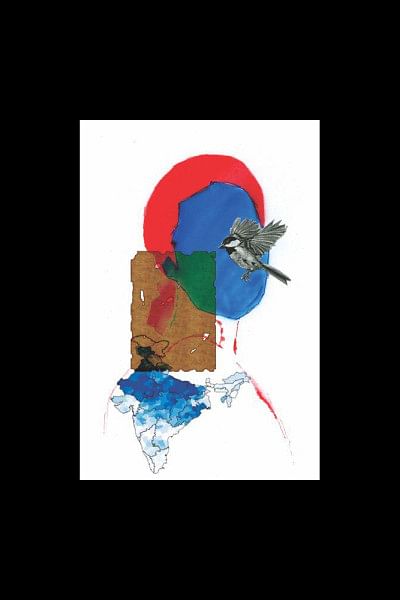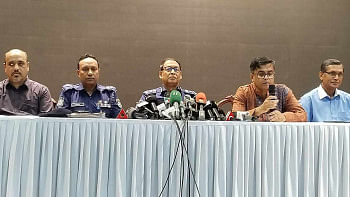Partition 1947: Do women have a country?
It was only the other day, some six decades after my mother's family left Pakistan, that I learnt about how they travelled to India in the aftermath of Partition. You could say that theirs was among the first of the post-colonial journeys undertaken by millions of Indians, journeys that were mostly involuntary, unwelcome, hazardous and protracted; embarked upon with fear and trembling, often without a known destination and, in some cases, an unfinished journey even today, more than half a century later.
My grandmother lived in an old house in a busy middleclass neighbourhood in Lahore, with her three brothers-in-law and their wives. In August 1947, she was alone in the compound with her younger son and several servants, the rest of the family having gone to the hills for the summer. When word of the division of the country reached Lahore, she was told by my uncle, her elder son, that she should prepare to leave because they feared violence. She refused, as did many other Hindus. Lahore, after all, was a Hindu-majority city, and it would surely be assigned to India. After the rioting began in the city and it became clear that it may not be, she locked up her house, tucked her keys into her waist and walked out with just a few clothes, a hamper full of essential condiments and home remedies, a little money and some gold. Left behind were the year's supplies of wheat and rice, sugar, oil, a household full of goods—including the beginnings of a trousseau for her unmarried son. She figured she'd soon be back.
She never returned. From Lahore she went to Dehradun in the Himalayan foothills, halted there for a short while with her daughter-in-law's family, then picked up again and moved to Delhi. For the rest of her life she moved from one city to another, wherever her two sons happened to be, a nomad without a home of her own.
Home for her was Lahore—India was another country.
What did Partition mean for women? What did it mean, in 1947, that there were now two countries, one for "Muslims", the other ostensibly for "Hindus"? Did they think of themselves as Indians and Pakistanis, or as Bengalis and Punjabis? As all of these or none? As either or neither? Not-Indian and not-Pakistani? Bangladeshi, not Pakistani? Or did they simply think of themselves as they had always done—Hindus and Muslims living in the same village or town or city, observing all the social and other obligations and proscriptions regarding food and marriage, yet living together. Separately, but together.
The question we asked ourselves when we began our enquiry into women's experience of Partition was: do women have a country?
The terrible violence of Partition left its scars on everyone, but it affected women in very particular ways, as we found when we spoke to the women who survived—the ones who were destituted, widowed, abandoned, or abducted, and then forcibly recovered and returned to 'their' respective countries.
These were the women for whom there was no archive, and about whom the historical record was silent. They were invisible.
How then were we to seek them out? As always, it was word of mouth that enabled us to locate them in different cities across the country. Women told us about other women who might lead us to those who were either directly affected, or who were in charge of their rehabilitation. Social workers and camp commandants, who received destitute women into homes, ashrams or refugee camps. Administrators and others who looked after them. The women themselves, who told us their own stories, but also stories about many others whom we couldn't locate or who were unwilling to speak.
It was they who recounted for us a history of how women experienced the Partition of India, who provided us with the details of how they fled, or were rescued, or had no choice but to leave. Who told us about the dailiness of their lives in undivided India, about the importance of roots and the desolation of rootlessness. Of the complete loss of well-being, post-partition. And, always, in the end, we heard a common refrain: what difference does it make to us who rules? British, Muslim, Indian, Pakistani—rulers change, those who are ruled remain the same.
And so it was that we heard about Kulli, a woman who had been abducted in 1947 in Muzaffarabad (now in Azad Kashmir), who refused to return to her family in Jammu even after she had been found. Kulli was 16, and had gone to visit her grandparents in village Hattiyan Dupatta when she was picked up by the tribals. She was passed from one man to another, tried to commit suicide by throwing herself off the roof of one captor's house, but was caught and taken away by a zaildar. She was finally rescued by her parents' erstwhile neighbour, a patwari, who kept her in his house for some time before he persuaded her, for her own safety, to marry his son who was in fact younger than her.

She had complete freedom, we were told, didn't believe in Islam, was not obliged to read the Quran or say her namaaz. But her name was changed to Sarwar Jahan. The common description of her was that she was like a dervish whose words had almost oracular importance. She never moved out without a pistol (is supposed to have shot dead three intruders who entered her house when she was alone), was quite militant—and wrote reams of mystic poetry. She sent the following to her brother:
Who has aimed these arrows of separation?
Neither you, nor me.
God has released these arrows of separation
That forever divided you and me.
From Jeet Masi in Jammu we heard about how she went back to Muzaffarabad after 40 years and met every single woman who had been abducted. About how, in every home she visited, special vegetarian food was cooked for her; and how the doctor who now lived in the house that had belonged to her parents, said he would gladly give it back to her if she wanted it.
Kammoben Patel, who was in charge of recovering abducted Hindu women from West Punjab, told us how she occasionally helped recovered women to return to their 'captors', because the trauma of relocation would have been unbearable for them.
And in possibly the most tragic account of the extremities people can be driven to, we heard the following. Charanjit Singh is a genial Sikh patriarch, head of a large family that came over to Rajasthan from Quetta in the NWFP, in 1947. Almost as if he was giving us just another detail, he told us about his uncle:
He had six daughters, all of them very good-looking. He was well-to-do and also had very good relations with his Muslim neighbours. They told him to give his daughters in marriage to their sons—that way, they would all then be related and his family's safety assured. They could continue to live in the village without fear. He kept listening to them and nodding, seeming to agree. That evening, he got all his family members together and decapitated each one of them with his talwar, killing 13 people in all. He then lit their pyre, climbed on to the roof of his house and cried out: 'Baratan lai ao! Hun lai ao baratan apniyan! Merian theeyan lai jao, taiyaar ne vyah vaste!' (Bring on the marriage parties! You can bring your grooms now. Take my daughters away, they are ready for their marriages!) and so saying, he killed himself too.
Nationalist histories, especially when they are about liberation or independence, are master narratives, in every sense of the words. There is seldom space in them for the little voices, voices from the margins, voices of the powerless. Yet the weak have the purest sense of history because they know anything can happen. And when they break their silence, they represent the most powerful challenge to the master narrative, because they disrupt its coherence, pick holes in its account, subvert its triumphalism.
It was the many, many women whom we met and spoke to about India's Partition, who showed us how borders are porous, how women can be exiles in their 'own countries', and how very elusive a sense of belonging can be for them.
Ritu Menon is the is co-founder of Kali for Women, India's first and oldest feminist press, and founder of Women Unlimited, an associate of Kali for Women. She is co-author of Borders & Boundaries: Women in India's Partition (Kali for Women, 1998). Her edited book No Woman's Land: Women from Pakistan, India & Bangladesh Write about the Partition of India was published by Women Unlimited in 2004.





Comments